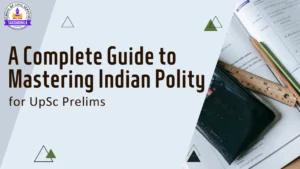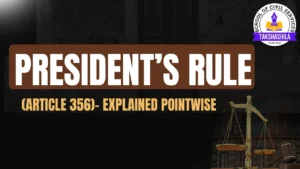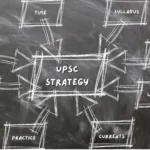![]() +91 60016-57575 |
+91 60016-57575 | ![]() info@takshashilascs.com
info@takshashilascs.com

UPSC CSE Prelims 2025 Countdown: Four Months To Go
As the clock ticks closer to the UPSC Prelims 2025, scheduled for 25th May, aspirants have only four months left to sharpen their focus and elevate their preparation to the next level. This final stretch isn’t just about finishing the syllabus but, more importantly, about refining strategies, deepening conceptual clarity, and honing test-taking skills. These months offer a unique opportunity to set yourself apart by adopting a targeted, strategic, and effective preparation plan that will empower you to face the exam with confidence.
Why These Four Months Are Critical
The last phase of preparation can make or break your chances of success in the UPSC Prelims. Many candidates stumble during this time due to common pitfalls, such as:
- The lack of a structured revision plan leads to confusion and poor retention.
- Insufficient practice of MCQs, which require a unique blend of speed, accuracy, and strategy.
- Neglecting time management is a critical skill for tackling the exam within the allotted time.
- Overlooking CSAT preparation, which is a qualifying paper but crucial for clearing the Prelims.
By focusing on structured revision, consistent practice, and strategic planning, you can significantly enhance your performance in this crucial phase.
Key Pillars of a High-Impact Prelims Strategy
A) Create a Precision-Focused Study Plan
A well-structured study plan forms the backbone of an effective revision strategy. These four months are your chance to fill knowledge gaps, strengthen weak areas, and consolidate your core understanding. Here’s a suggested timeline:
- First Reading (Up to 2 Months Before the Exam)
- Core Subjects: Focus on the foundational pillars of GS Paper 1—Polity, Economy, Environment, Geography, Modern History, and Science & Technology.
- Current Affairs: Stay updated on current events and integrate them with static subjects for better retention.
- CSAT: Begin incorporating CSAT preparation alongside your GS revision.
- Second Reading (1 Month Before the Exam)
- Focused Revision: Revisit difficult areas identified in your first reading. Organize notes and test retention using MCQs.
- PYQ Practice: Solve questions from the past 5-7 years while revising corresponding subjects.
- Third Reading (3 Weeks Before the Exam)
- Targeted Practice: Focus on your weakest areas and work on refining your understanding.
- Mock Test Strategy: Take timed mock tests to reduce errors and simulate exam-day conditions.
- Final Phase (Last 2 Weeks)
- Speed and Accuracy: Prioritize revising high-yield topics, analyzing mock test mistakes, and solving PYQs under timed conditions.
- Stress Management: Practice techniques to stay calm and composed during the final stretch.
B) Efficient Revision Techniques for Maximum Retention
- Subject and Current Affairs Integration: Link current affairs with static subjects, e.g., connecting budget announcements with the Economy or environmental policies with Geography.
- Layered Learning Approach: Pair a static subject with a dynamic one during revision, e.g., Polity + Current Affairs.
- Time-Bound Mock Tests:
- Sectional Tests: Focus on specific topics to address weak areas during the first revision phase.
- Full-Length Tests: Take 2-3 mock tests per week to improve endurance, speed, and accuracy.
- PYQ Practice: Solve previous year questions by subject and review them frequently to align with the exam’s demand.
C) Prioritize Based on PYQ Trends
Analyzing PYQs can guide you in identifying high-yield topics and allocating time effectively. Here are some suggestions based on trends:
- Polity: Emphasize constitutional provisions, landmark judgments, and amendments.
- Economy: Focus on fiscal policy, economic surveys, and government schemes.
- Environment and Ecology: Study climate change, biodiversity, and environmental legislation.
- Geography: Concentrate on maps, drainage systems, and physical phenomena.
- CSAT: Develop skills in data analysis, logical reasoning, and comprehension, as these remain vital.
Using PYQs as a blueprint allows you to align your preparation with recurring patterns in the exam.
Read More Post: Improving Answer Writing Skills for UPSC Mains Exam
D) Subject-Specific Preparation Strategy
UPSC Prelims GS Paper 1: Targeted Preparation Approach
The GS Paper 1 features 100 multiple-choice questions covering diverse subjects. Success lies in understanding topic-wise weightage, analyzing trends, and focusing on high-yield areas. By leveraging insights from past years, you can strategize effectively for UPSC Prelims 2025.
By adopting this comprehensive, strategic approach, you can ensure that these final four months are your most productive and impactful, setting the stage for success in the UPSC Prelims 2025.
| Year | History | Geography | Polity | Art & Culture | Environment | Science & Tech | Economics |
| 2013 | 16 | 18 | 16 | 9 | 17 | 14 | 19 |
| 2014 | 20 | 14 | 14 | 10 | 18 | 16 | 10 |
| 2015 | 17 | 16 | 13 | 3 | 11 | 8 | 13 |
| 2016 | 15 | 7 | 7 | 3 | 18 | 8 | 18 |
| 2017 | 14 | 9 | 22 | 5 | 15 | 9 | 16 |
| 2018 | 22 | 14 | 13 | 7 | 13 | 10 | 18 |
| 2019 | 17 | 14 | 15 | 3 | 11 | 7 | 14 |
| 2020 | 20 | 10 | 17 | 4 | 10 | 10 | 15 |
| 2021 | 10 | 10 | 11 | 5 | 17 | 14 | 16 |
| 2022 | 14 | 16 | 15 | – | 14 | 12 | 14 |
| 2023 | 14 | 16 | 15 | – | 14 | 12 | 14 |
General Strategies For Tackling Topic Distribution
Adopt a Subject-Based Revision Approach
- Daily Focus on Current Affairs: Prioritize current affairs and make them a part of your daily revision.
- Alternate Between Subjects: Rotate subjects during your revision schedule to maintain focus and avoid monotony.
Incorporate Mock Tests into Your Routine
- Full-Length Mock Tests: Attempt at least 2-3 full-length tests weekly to simulate exam conditions.
- Analyze Performance: After every mock test, identify your weak areas and revise them thoroughly.
Target High-Weightage Areas
- Key Subjects: Allocate extra attention to high-weightage topics like Current Affairs, Polity, Economy, and Environment.
- Broader Question Range: Dedicate more time to subjects that cover a wider variety of topics.
Reinforce Basics with NCERTs
- Revise NCERTs to build a solid foundation in core subjects such as Geography, History, and Science & Technology.
Leverage PYQs for Effective Revision
- Regular Practice: Solve Previous Year Questions (PYQs) consistently to identify recurring topics and understand exam patterns.
- Focus on Frequent Topics: Pay special attention to areas that appear repeatedly in past exams.
CSAT: Your Qualifying Paper
Many aspirants underestimate CSAT because it is a qualifying paper. However, failing to clear the CSAT disqualifies candidates from moving forward, so it demands equal seriousness.
Overview of the UPSC CSAT Paper
The Civil Services Aptitude Test (CSAT) evaluates candidates’ analytical, reasoning, and comprehension abilities. Unlike the General Studies paper, which is content-heavy, CSAT focuses on problem-solving and logical skills.
- Key Features of the CSAT:
- Consists of 80 questions.
- Requires candidates to score a minimum of 33% (66 marks) to qualify.
Major Sections and Question Distribution
The CSAT paper typically includes the following sections, with a varying distribution of questions:
- Comprehension
- Logical Reasoning
- Data Interpretation
- Basic Numeracy
By focusing on these strategies and understanding the structure of both GS and CSAT, you can ensure a balanced and effective preparation for UPSC Prelims.
| Year | Math & Basic numeracy | Logical & Analytical reasoning | Reading comprehension | Decision making | Data Interpretation |
| 2011 | 11 | 17 | 39 | 8 | 5 |
| 2012 | 3 | 28 | 40 | 9 | 0 |
| 2013 | 11 | 21 | 33 | 6 | 9 |
| 2014 | 20 | 23 | 31 | 0 | 6 |
| 2015 | 30 | 18 | 30 | 0 | 2 |
| 2016 | 31 | 21 | 28 | 0 | 0 |
| 2017 | 28 | 22 | 30 | 0 | 0 |
| 2018 | 18 | 22 | 26 | 0 | 14 |
| 2019 | 32 | 18 | 30 | 0 | 0 |
| 2020 | 42 | 12 | 26 | 0 | 0 |
| 2021 | 33 | 18 | 27 | 2 | 0 |
| 2022 | 25 | 22 | 30 | 3 | 0 |
| 2023 | 37 | 15 | 28 | 0 | 0 |
General Preparation Strategy for CSAT
1. Build a Strong Foundation
- Begin with standard textbooks like APTI PLUS course material, R.S. Aggarwal, Arihant’s Reasoning Books, and NCERTs for basic numeracy.
- Dedicate daily practice time to logical reasoning, basic math, and comprehension problems to strengthen core concepts.
2. Practice Mock Tests and PYQs
- Solve Previous Year Papers to familiarize yourself with the exam pattern and question types.
- Attempt mock tests under timed conditions to improve speed and accuracy.
- Evaluate your performance after each test, and focus on strengthening weak areas.
3. Focus on Time Management
- Master time allocation by practising solving questions within strict time limits.
- Identify question types you are most comfortable with and aim to attempt them first in the exam.
- During practice sessions, allocate fixed time slots for each section to ensure balanced time management.
4. Use Shortcuts and Techniques
- Learn shortcuts for arithmetic calculations, such as Vedic math techniques, to save time.
- Practice logical reasoning using pattern-recognition tricks and decision-making frameworks.
5. Focus on Accuracy
- Since CSAT is qualifying, prioritize accuracy to achieve at least 66 marks rather than attempting all questions.
- Avoid unnecessary negative marking by attempting only those questions you are confident about.
6. Revise Regularly
- Regularly revisit key areas such as decision-making, comprehension, and problem-solving scenarios.
- Consistent practice in reading comprehension, logical puzzles, and numerical problems will improve your chances of scoring high.
Test-Taking Strategy and MCQ Elimination
- Simulate Exam Conditions: Take full-length mock tests under strict time limits to mirror real exam conditions.
- Elimination Techniques: Learn to eliminate at least one or two incorrect options, even if you are unsure of the correct answer.
- Mistake Logbook: Keep track of mistakes from mock tests, analyse patterns, and revise problem areas to avoid repeating them.
Question Selection Strategy: Plan your approach in advance, deciding which questions to attempt first and which to leave for later.
Common Pitfalls to Avoid in the Final Stretch
- Using Too Many Resources: Avoid scattering your efforts by referring to too many sources. Stick to trusted resources for each subject.
- Neglecting CSAT: Don’t overlook CSAT in the rush to prepare for GS. Treat it with the seriousness it deserves.
- Over-Attempting Questions: Avoid attempting questions recklessly. Focus on quality over quantity to minimise negative marking.
- Ignoring Mistakes: Failure to analyse mistakes from mock tests can lead to repeated errors. Regularly review your mistakes and work on improvement.
By following this strategy and avoiding common pitfalls, you can approach the CSAT paper with confidence and improve your chances of clearing this crucial stage of the UPSC Prelims.
Join Takshashila Civil Services – Your Ultimate Gateway to Cracking APSC & UPSC.







